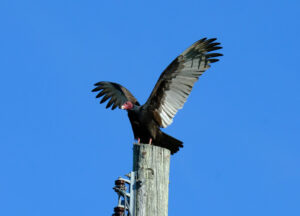On a gray September day, I walked north on Ocean Beach from Sloat Boulevard to the Cliff House. It was far from an idyllic walk on that black-sand beach. I saw several dead seagulls, one being eaten by a crow. Hundreds of jellyfish had washed ashore, and trash outweighed seashells. Posted signs said I was entering a Snowy Plover Protection Area and listed the rules I should follow to protect the birds. I didn’t see any plovers at first. They are well camouflaged when they’re still, but you won’t miss them when they scamper across the sand: They’re the cutest birds on the beach.
After about a half mile, I came upon a group of plovers and sanderlings. I watched them from a distance until a young woman and her bounding offleash boxer flushed them. The happy dog was more interested in his stick than the plovers, but that didn’t matter to the frightened birds. The young woman flashed me a winning smile. She seemed completely oblivious to the law requiring that her dog be leashed and unconcerned that its antics might stress these federally threatened birds. Only about 1,500 plovers nest on California beaches, says Gary Page, head of the Wetlands Division at PRBO Conservation Science. Up to 100 plovers spend July to May at Ocean Beach and Crissy Field. But they don’t stick around to breed, further evidence that San Francisco is a tough place to raise a family.
The plovers do breed in the South Bay’s former salt ponds. Nobody knows whether they bred here before the salt ponds were built, says Page. The first recorded sighting of a plover in the Bay was in 1910 when a pair was spotted on a new levee. Now about 10 percent of the entire Pacific Coast population breeds here.
In 2008, biologists with the San Francisco Bay Bird Observatory counted 118 nests at the South Bay salt ponds, with the highest numbers at Eden Landing on the east side and Ravenswood on the west. In 2008 biologists with the Snowy Plover Recovery Project banded 83 chicks to track their movement and determine survival rates.
The region’s most prolific breeding takes place at the mouths of the Pajaro and Salinas rivers in Santa Cruz County. Plovers and people share these beaches, so scientists close the upper beach to people and provide enclosures for the chicks during breeding season, while the lower beach remains open for human recreation. “Part of the equation for successful conservation is to find people who are tolerant of living with protective measures,” says Page. “We make sure people have plenty of recreational opportunities so that they don’t feel pinched off.”
Plovers aren’t as successful on beaches to the north. Nesting is sporadic in Sonoma County, and on Point Reyes’s Great Beach, only one chick survived out of 21 nests found last year, according to Golden Gate Audubon. The rest fell victim to wind, tides, and predators.
You can help plovers by staying out of posted habitat areas, walking near the waterline, keeping your dogs leashed, staying at least 50 feet from birds and nests, and leaving driftwood where you find it. Find out more at www.western snowyplover.org.

.jpg)



